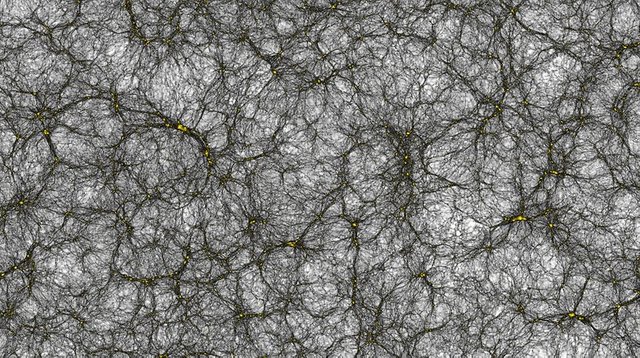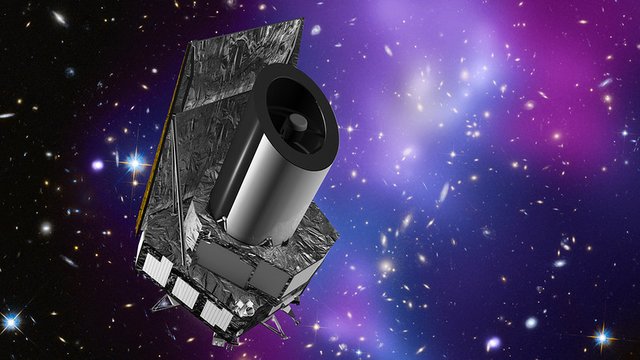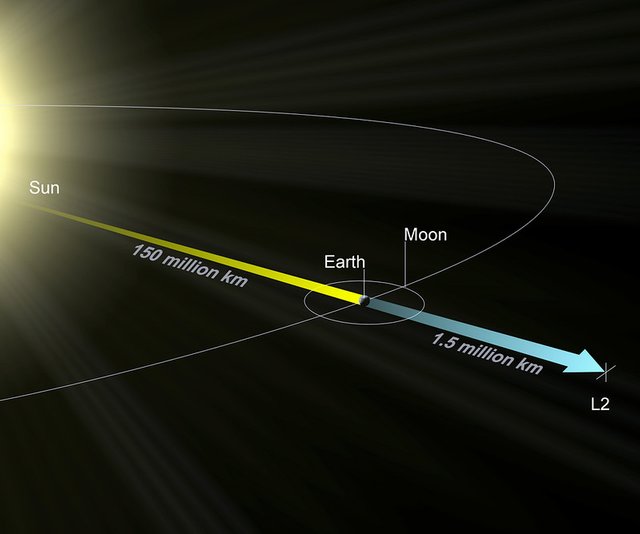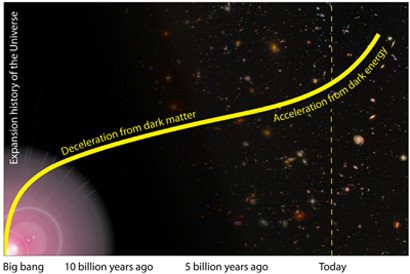Virtual universe a ten billion light years across simulated
A catalogue of about 25 billion virtual galaxies has been generated from 2 trillion macro-particles, representing the dark matter fluid.
A group of astrophysicists from the University of Zurich developed the simulator, which is being used to calibrate the experiments on board the future Euclid ESA mission.
The universe consists of 23 percent of dark matter and 72 percent of dark energy while on conventional matter we are made from, only 5% left. "The nature of dark energy remains one of the main unsolved puzzles in modern science," says Romain Teyssier, professor for computational astrophysics at Zurich University. A puzzle that can be cracked only through indirect observation: When the Euclid spacecraft will capture the light of billions of galaxies in large areas of the sky, astronomers will measure very subtle distortions that arise from the deflection of light of these background galaxies by a foreground, invisible distribution of mass – dark matter.
Co-author of the simulation Joachim Stadel explains:
That is comparable to the distortion of light by a somewhat uneven glass pane

Image: Joachim Stadel, UZH - A section of the virtual universe, a billion light years across, showing how dark matter is distributed in space, with dark matter halos the yellow clumps, interconnected by dark filaments. Cosmic void, shown as the white areas, are the lowest density regions in the universe.
The challenge of this simulation was to model galaxies as small as one tenth of the Milky Way, in a volume as large as our entire observable universe.
The new map of the universe will be used by ESA Euclid mission, set to launch in 2020.

Image: ESA Euclid - an artist's impression
Euclid will be launched by ESA in 2020, and put in the A large-amplitude (~ 1 × 10^6 km) halo orbit around the second Lagrange point of the Sun-Earth system. With James Webb telescope, set for launch in 2018 and several other missions, L2 will become a lively place.

Image:ESA - L2 point; Euclid will orbit this point, while its position relative to Earth will stay approximately the same
Euclid's mission is to map the geometry of the dark Universe. Its infrared telescope will investigate the distance-redshift relationship and the evolution of cosmic structures at distances, equivalent to a look-back time of 10 billion years.

Image: Euclid Assessment Study Report - The Universe evolves from a homogeneous state after the big bang through cooling and expansion. The small initial inhomogeneities grow through gravity to produce the large-scale structures that we see today
Sources:
https://comp-astrophys-cosmol.springeropen.com/articles/10.1186/s40668-017-0021-1
IT's cool we're finally developing applications for our knowledge about dark matter.
it means we're pretty sure it -- or something that behaves as we predict it should -- exists.
I wonder if there are any technological applications for our knowledge of dark matter outside of cartographing the universe?
The use cases of the dark matter will appear when we'll know more. But regarding theoretical aspects of dark matter it's better to ask prof. @lemouth - he is the Archimage of Physics here at Steemit ;-)